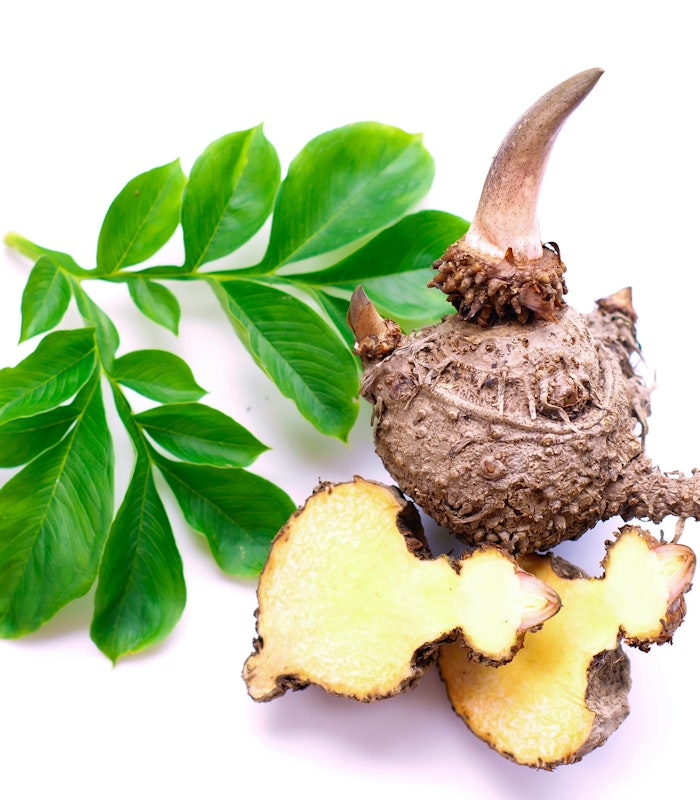Of all the common hydrocolloids, Konjac Gum exhibits the highest molecular weight and strongest ability to add viscosity once fully hydrated. Konjac Gum although slow to hydrate fully, does exhibit some of the usage challenges of other cold water soluble thickeners (Xanthan, Cellulose Gum. To avoid this issue, we recommend it be combined with other dry ingredients at time of addition into water. The ability of Konjac Gum to develop high viscosity is not impacted by salt content or pH. At elevated pH, however (pH = 9), Konjac Gum will form gels on its own. Low usage levels of synergistic gels are used for suspension in beverages. Higher usage levels of the synergistic gel functionality (with Xanthan, Carrageenan, Locust Bean Gum) are used to deliver elastic gel textures in many food applications (vegan meat alternatives, dairy product alternatives). The texture of these gels can be altered by adjustments in hydrocolloid ratios, usage levels, salt content and formulation total solids. These formulation parameters and processing conditions can also influence the thermoreversibility of these gels. Konjac Gum is used alone or in combination with Xanthan in gluten-free baked products both for elastic texture and moisture management.

Konjac
Common Names
- Konjac Gum
- Konjac Flour
- Elephant Yam
Functionality
- Thickener
- Synergistic
Quality
- Viscosity
- Synergistic Gel Strength
Applications for Konjac
Botanical Sources
Konjac is obtained from the edible tubers of Amorphophallus konjac, which is cultivated in warm subtropical eastern Asia from Japan and China south to Indonesia. The tuber of this plant is called a corm —often referred to as a yam. Following harvest, the tubers are cleaned, ground, and the functional carbohydrates extracted with alcohol. The dry powder is then produced through drying and milling. The quality of the finished product includes a level of the desired glucomannan. Freshly harvested Konjac contains 64% of dry matter as glucomannan. Konjac Gum contains approximately 85% glucomannan.

Polymer Chemistry
The chemical structure of the Konjac gum carbohydrate polymer consistis of glucose and mannose in the ratio of approximately 2:3 and thus referred to as a “glucomannan.” The glucose and mannose are linked together by b(1-4) bonds along the polymer backbone. Acetyl groups are present along the polymer backbone, on average every 9-19 sugar units. Side chains or branches are also present. Konjac has a tremendous ability to absorb water, up to 100-200 times the volume. The large molecular size results in a slow development of thickening and full moisture binding and synergistic functionalities. Heat in processing can be used to speed hydration and is required for elastic gel formation synergies.
